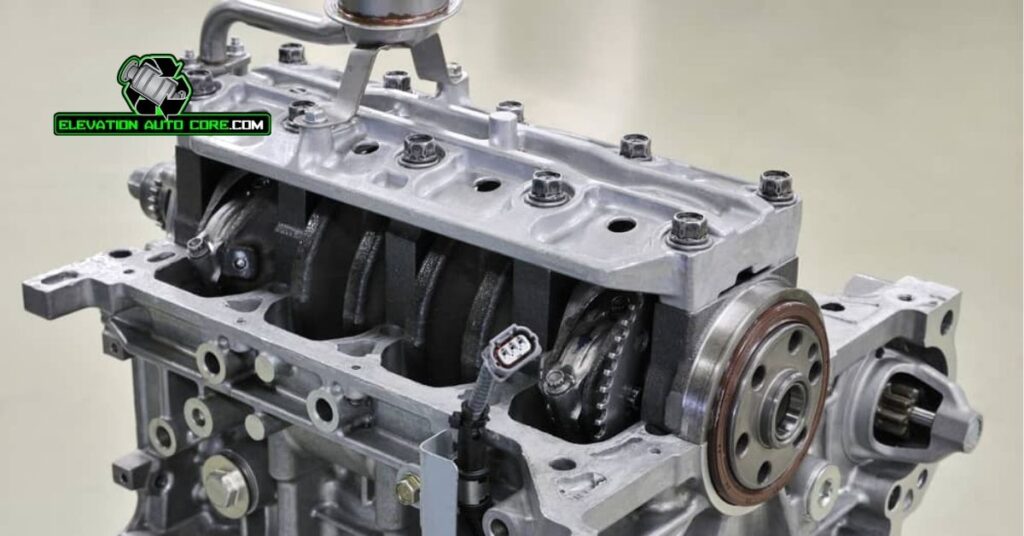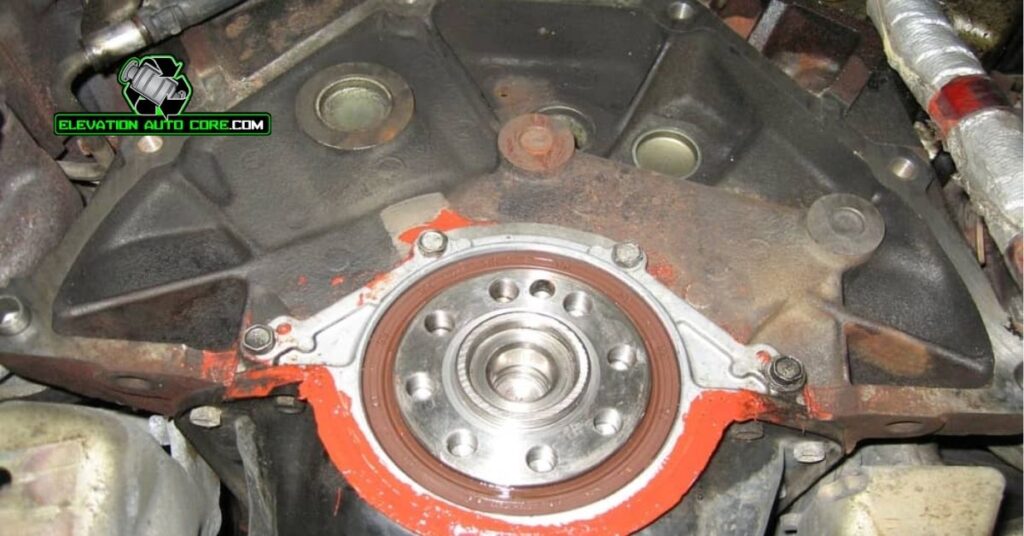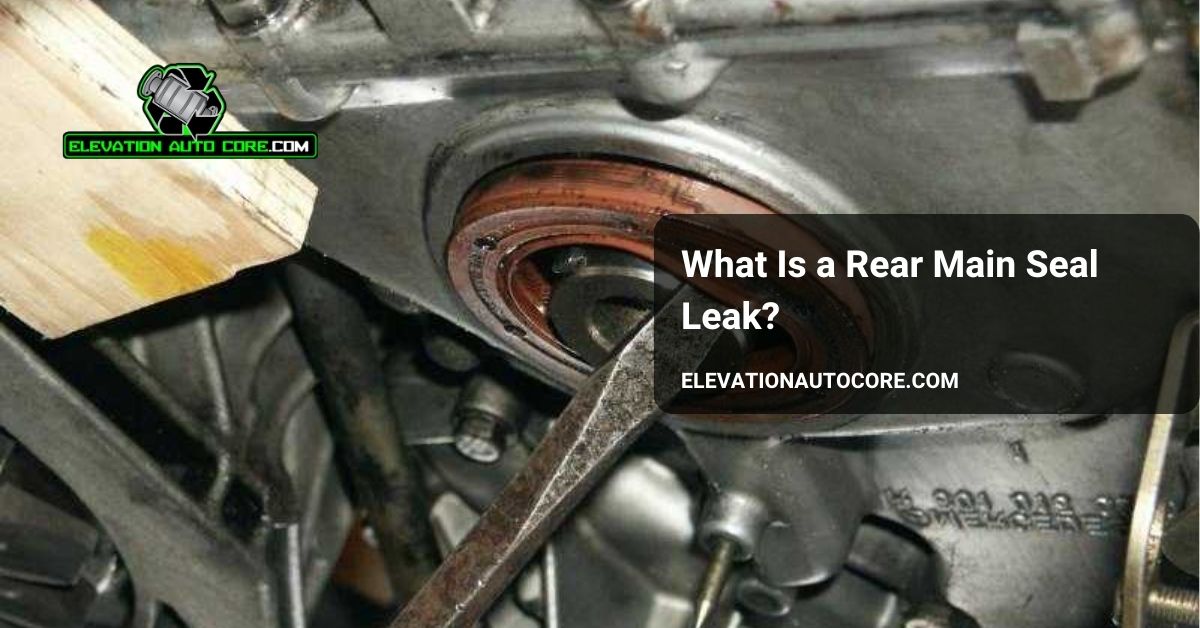What is a rear main seal leak, and why should you care? This common yet often overlooked issue can lead to serious engine damage if ignored. Understanding what it is and how it impacts your vehicle is crucial to keeping your engine running smoothly. Keep reading to learn the signs, causes, and potential fixes for this problem.
What Is A Rear Main Seal Leak
A rear main seal leak occurs when the seal at the back of your engine fails, causing oil to escape. This seal connects the crankshaft to the transmission, preventing oil from leaking out while the engine operates. Over time, wear and tear, heat, and friction can degrade this seal.
Oil leaking near the rear of the engine is the primary indicator of this issue. Leaks often start small but grow with continued driving. If left unchecked, it can lead to important engine problems due to inadequate lubrication.
Modern vehicles rely heavily on the integrity of their engine seals. A damaged rear main seal not only affects oil levels but also compromises engine performance. Regular inspection is vital to detecting potential failures early and avoiding costly repairs.
Causes Of A Rear Main Seal Leak

A rear main seal leak often develops due to exact factors that impact the seal’s integrity. Understanding these causes can help you identify and address the issue promptly.
Wear And Tear
Constant use of your vehicle over extended periods contributes significantly to wear on the rear main seal. Repeated heating and cooling cycles cause the seal material to deteriorate over time. Friction and exposure to engine oil may create cracks or hardening, leading to leaks.
Poor Installation
Improper installation increases the likelihood of a rear main seal failing prematurely. Misalignment during installation may prevent the seal from forming a tight fit, allowing oil to escape. If the seal isn’t installed correctly, additional stress can develop where the seal contacts the crankshaft.
Oil Type And Quality
The type and quality of engine oil heavily influence the health of the rear main seal. Using low-quality oil or incompatible additives can break down the seal material. Extended use of contaminated or old oil accelerates degradation, making leaks more likely. Proper maintenance reduces this risk.
Signs Of A Rear Main Seal Leak

Detecting a rear main seal leak early can save you from expensive engine repairs. Paying attention to visible and sensory indicators helps identify the issue quickly.
Oil Spots Under The Vehicle
Oil stains near the back of your engine can indicate a leak. Liquid pooling under your car often appears dark brown or black, especially on older engines. In severe cases, the spots might become larger over time as the leak worsens. Inspect your parking space regularly for changes in oil patterns.
Burning Oil Smell
A noticeable odor of burnt oil usually means oil is leaking onto hot components. When the rear main seal fails, oil may seep onto the exhaust pipe or other heated areas beneath the engine. This smell often becomes stronger after extended driving. Ensure you address this symptom promptly to prevent further engine complications.
Engine Oil Level Drops
Low oil levels on your dipstick can confirm a potential leak. A rear main seal leak allows engine oil to escape unnoticed while driving, leading to a gradual decrease. Frequent oil refills might signal this issue if you’re not seeing external leaks. Periodic oil level checks help track this problem effectively.
Impacts Of A Rear Main Seal Leak

A rear main seal leak affects more than just oil levels. It disrupts vehicle performance and often leads to costly repairs if left unresolved.
Vehicle Performance Issues
Oil leakage from the rear main seal directly impairs engine efficiency. Escaped oil reduces lubrication, causing increased friction between engine components. This can result in overheating and hastened wear. You might notice a drop in engine power or sluggish acceleration as the engine struggles without proper lubrication. Persistent leaking could damage the crankshaft or surrounding parts, impacting overall drivability. Monitoring for early signs, such as oil drops or a burning smell, is critical to maintaining performance.
Increased Repair Costs
Ongoing oil loss from a rear main seal leak escalates repair expenses rapidly. Repairing the seal itself is labor-intensive due to its location between the engine and transmission. If the problem progresses, damaged components like bearings or crankshaft surfaces add to the cost. You might also face expenses for cleaning oil-stained parts and surfaces. Identifying and addressing leaks early can prevent these cumulative costs, helping you maintain your vehicle within a manageable budget.
How To Fix A Rear Main Seal Leak

Addressing a rear main seal leak promptly is essential to prevent severe engine damage. Answers range from do-it-yourself approaches to seeking professional assistance, depending on the severity of the problem.
DIY Answers
Inspect the rear of the engine for minor leaks before attempting any repairs. Use a high-quality engine stop-leak additive, which can restore flexibility to the seal and temporarily reduce leakage. Follow the manufacturer’s application instructions precisely for the best results. Check your vehicle’s service manual for compatibility with these products, as additives may not work in every situation.
Gather basic tools like a jack, socket set, and proper safety equipment if you intend to attempt a seal replacement. Drain the engine oil entirely to access the rear main seal housing. Remove the transmission carefully, as it’s necessary to access the crankshaft seal area. Replace the existing seal with a new, manufacturer-recommended one to ensure it fits perfectly.
Reassemble the components cautiously, verifying all connections are secure. Refill the engine with fresh, high-quality oil to prevent further damage. Always test-drive the vehicle after completing repair work to confirm the leak is resolved. Keep in mind, tackling this repair yourself is highly complex and requires advanced automotive skills.
Professional Repair Options
Contact a certified mechanic for a complete diagnosis of the leak if the damage appears extensive. They’ll disassemble and assess potential damage to surrounding components, including the crankshaft and oil pan. This inspection ensures all affected parts are repaired or replaced to avoid recurring issues.
Request rear main seal replacement services from a reputable repair shop. These services involve careful removal of the transmission and oil pan, followed by the installation of an original equipment manufacturer (OEM) seal that matches your engine’s specifications. Professionals also verify proper alignment and torque settings to avoid additional leaks.
Schedule post-repair checks for continued monitoring, as these leaks can recur if underlying issues, like crankshaft misalignment, are unresolved. Professional repairs ensure higher accuracy in diagnosing and fixing the problem, reducing long-term costs even if the initial service charges are higher.
Preventing Rear Main Seal Leaks
Taking proactive measures can minimize the chances of a rear main seal leak. Focus on proper vehicle care and informed choices to maintain seal integrity and engine performance.
Regular Maintenance
Regular vehicle inspections contribute significantly to preventing rear main seal leaks. Routine oil changes help identify early signs of seal wear, keeping oil levels and quality consistent. Check under your vehicle periodically for oil stains to detect leaks as soon as they occur. Pay attention to unusual engine noises or changes in performance, as these may signal impending problems with the seal. Ensure scheduled maintenance includes inspecting engine seals, as professional mechanics can catch minor issues before they escalate into major repairs.
Using The Right Oil
The type of oil used influences seal longevity and engine performance. Select high-quality engine oil that matches the manufacturer’s specifications for your vehicle. Avoid mixing additives that could create friction or cause materials to harden over time. Check the oil’s viscosity and ensure it remains stable under varying temperatures, as this reduces stress on the seal during heating and cooling cycles. Opt for oils labeled “seal-friendly” or recommended for older engines if your vehicle has higher mileage, as they include compounds that maintain seal flexibility.
Conclusion
A rear main seal leak is more than just an inconvenience—it’s a potential threat to your engine’s health and your wallet. Staying proactive with regular maintenance and inspections can make all the difference in catching leaks early and avoiding costly repairs.
By using high-quality engine oil, addressing signs of wear promptly, and seeking professional help when necessary, you can protect your vehicle from unnecessary damage. Small efforts now can save you from major headaches down the road, ensuring your engine runs smoothly for years to come.

